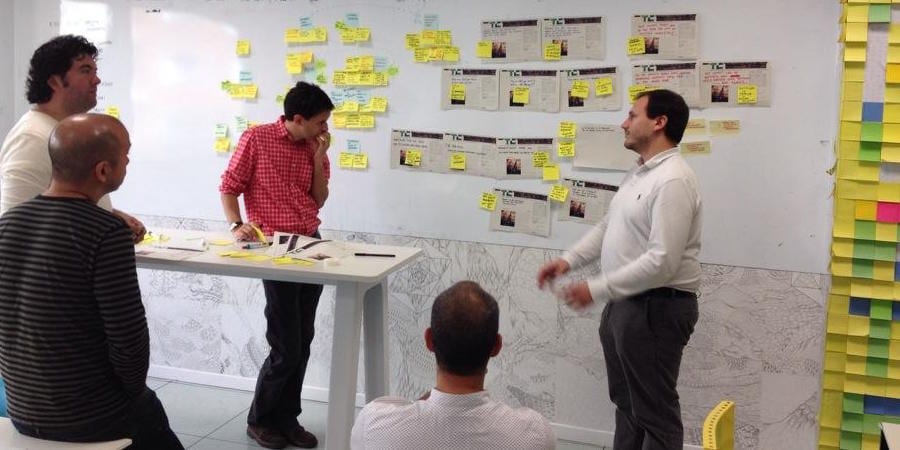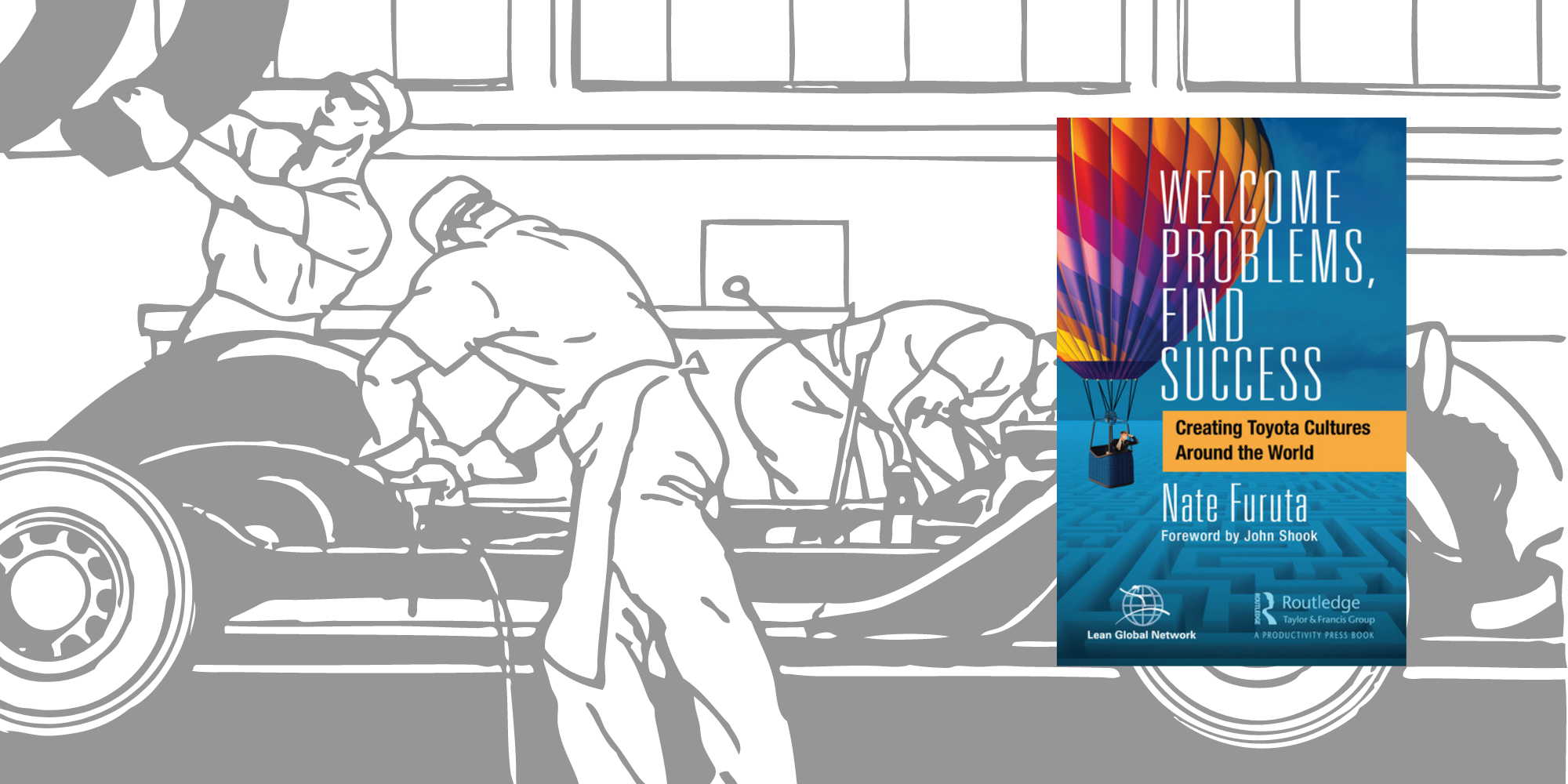
Lean healthcare on the front lines
FEATURE – Our coverage of the Covid-19 emergency continues with an article discussing how lean healthcare principles can support and protect the professionals at the front line of this war.
Words: Michael Ballé, lean author, executive coach and co-founder of Institut Lean France
Like many of you, I’m confined. No gemba walks for a while. I’ve been talking to the lean hospital leaders I know and, although we can’t do much to help directly, we can still listen and cheer them on.
With time to think, I’ve been wondering – how does lean’s upside-down thinking make a difference for the front lines? How can it help when you’re overwhelmed, both materially and emotionally, by an unfolding crisis? As we salute the courage and dedication of healthcare professionals around the world, I’d like to share a jumble of immediate reactions that we can tear apart and analyze later when we’ve pulled through and start hansei.
A key part of keeping one’s emotional balance as events unfold is to stay ahead of the curve. Lean’s approach to hospitals is a strategy of maintaining the continuity of care – and looking into all the care interruption risks. Practicing this outlook daily in peacetime turns out to be immensely helpful in wartime because it helps to keep executives focus on the next point to win, even as you lose some. Constantly looking up from the overwhelming wave of work and grief and staring at the horizon line helps team balance their focus on now with what next. There can’t be a plan, because we’re too far out into the unknown. But being able to see things coming with a little bit of a head start makes all the difference in a team’s confidence in their ability to cope.
Lean Thinking starts by looking at patient and staff safety. This is scary because this virus is new, largely unknown and easy to catch. We have all been caught with our pants down in terms of protective equipment, such as masks and gel, treatment equipment like respirators as well as testing capability. There are too few tests available and what there are not that reliable. Patients are scared, families can’t see their loved ones because of confinement and caregivers bravely carry on with the fear of catching the bug.
While everyone works hard at solving the logistical problems of getting the flow of critical equipment and materials going, we also see the importance of emotional safety. Overwrought people tend to slip up and even the best have a tipping point when they lose their cool and either yell at the wrong person or take an unwise decision. Not overreacting to these incidents and learning to console people when they’ve fouled up turns out to be a critical skill to keep everyone going – everyone understands and thinks. “it could be me next”. Maintaining an atmosphere of psychological safety through sheer calm and presence – something lean teaches you to do with its relentless focus on “why?” not “who?” – is essential.
After safety, logistics. Facing the Covid-19 wave is one huge flexibility exercise. Hospital beds have to be reassigned to Covid patients. Protective equipment has to be sourced and distributed. Staff have to be retrained. Meanwhile, the rest of the activities continues in hospitals that were already strained before the crisis. At the moment, ERs are almost empty as people fear going to the hospital and avoid showing up for minor injuries, but we fear the moment when treatments that were postponed will need to be handled. Lean Thinking’s 4M approach helps us to deal with such monumental realignment of resources by structuring issues in terms of:
- Manpower: who is the best person to lead on this problem and who do they need to talk to? What is their reasoning? Who needs support where? Who’s being overburdened but not shouting for help and is likely to break down next?
- Machines: while all of this is going on, the rest of the hospital needs to continue to work – this means dedicating some time to continuing to work with the infrastructure teams to understand how the changes will impact deep-running systems.
- Materials: everyone is currently focused on masks, but the lockdown of society out of the hospital is going to have massive and unexpected consequences on supply chains. By looking daily at the hospital’s inventory situation, we’re already discovering surprising out-of-stock items (plus the usual wrong information on the computer).
- Methods: methods are being challenged for every caregiver as, first, the virus is new and, second, materials and equipment are missing so nothing can be done in the proper way as yet. How do we rediscover the heart of the method and ignore the paperwork around it? How do we keep focused on reasoning?
Lean leaders understand problems and problem-solving and can deliberately focus their teams on new problems: let’s look at the new problems and how can we address them in new ways. By expressly focusing on changes and what these changes imply in practice, lean leaders help their teams get to grips with what they need to learn and face the thorny issues of what rules and regulations to bypass and which to maintain at all costs.
Masks, for instance, is a crisis for everyone. Masks are a critical front-line protective equipment – and there’s not enough to get around everywhere. One hospital I know has welcomed local help of seamstresses to sew cloth masks. Cloth masks simply don’t do the job for staff caring directly for Covid-19 patients and will never pass the strict protocols for medical supplies. On the other hand, many jobs at the hospital – from administrative or information staff to security guards – require far less proximity with possible carriers, and any mask could help in stopping virus-carrying droplets. These situations are going to happen more and more as supply chains stumble. They key thing is not to get stuck in a YES/NO framework but to ask the question of WHAT/WHEN/WHERE conditions to see where substitution products can take some of the load, and where they can’t.
Fixing logistics issues is the only way to truly support teams, but unfortunately, as we know, logistics don’t fix themselves at the snap of one’s fingers. In the meantime, teams are faced with working in ways they aren’t used to – and feel understandably distressed by that. On top of the fear of catching the bug, they constantly worry about doing the wrong thing and potential malpractice accusations afterwards. They also seek approval or go-ahead from central structures that are simply too slow and too far away from the field to respond.
Lean leaders can support their teams by understanding their concerns and constantly discussing the dividing line between which part of protocols can be changed and which can’t. A vivid lesson of this first month in the pandemic is that, even beyond hospitals and in other businesses, we’ve created such coupled systems that you need an incredible amount of paperwork and computer forms to get anything done. Everything needs a code to be released, a form to be filled, and so on. Furthermore, we’re discovering under fire how IT systems have allowed the centralization of such decisions by normalizing them within the system – and the impossibility of changing things on the spot. Teams need help with this to rediscover their autonomy safely – as well as clear “no go” zones of things we shouldn’t give in on, no matter what the immediate pressure.
The upshot from lean hospital leaders is that Lean Thinking, particularly the experience of daily logistics and the practice of formulating problems with front-line teams, really helps to stay one step ahead of the tsunami. But the wave is coming and we know we’ll not be able to keep everything running – it’s happening already in some places. What we find is that faced with painful setbacks, people focus on: 1) solving a problem they know how to solve (which might not be effective with the actual, new, problem); 2) being overwhelmed with the feelings of everyone; or 3) denying it all and hoping that, by doing the same as usual, it will simply go away.
Lean Thinking helps us with:
- Sideration: The problem we see coming on the horizon might not happen in the end, but if we see it, it has a real chance of reaching us. So, let’s do something now. Let’s sow cloth masks and hope we don’t have to use them. Forcing yourself to face issues moves you out of the denial ostrich-like reflex of sticking your head in the sand and into doing something to prepare. You might be preparing for the wrong problem, but at least teams are working and learning, which will help them to respond more flexibly and with greater confidence to the real problem when it hits.
- Problem-solving: solve the right problem, solve the right problem, solve the right problem. Yes, it’s a panic. Yes, people are clamoring for quick decisions. Still, look up from the stitch work, look around and ask yourself and your teams: are we solving the right problem? This shouldn’t freeze you into the inaction of not doing anything until you have all the right answers, but it should encourage you to take deep breaths and mental pauses to avoid following others in their panic-driven mental chutes down the wrong path to costly mistakes. In a real crisis, bad mistakes have worse consequences – the first rule of crisis problem solving is don’t make things worse.
- Acknowledging emotions: this is a life-threatening, society-wide crisis. People will panic. They will freak out and aggress, stonewall or collapse. They will get obsessed with their own thinking and be incapable of listening to others or accepting other points of view. They will freeze and be incapable of taking simple decisions. Things will go wrong in absurd ways. Acknowledging strong emotions such as fear, anger or rage at the machine from sheer frustration is the best-known way to reboot the frontal cortex and get people thinking again. We will have low times, but also casual moments of extraordinary, common-place bravery and stunning and unexpected insights, and we will feel the force of team spirit in front of impossible odds. Emotions are not “out there”. They are a key part of the problem. We need to communicate early and often on upcoming changes and set up spaces for people to ask questions and express feelings.
On a final note, command-and-control is an alluring mirage in severe crises. Yes, people turn to a leader that issues strong commands. But conversely, officers also panic and issue contradictory and nonsensical instructions that, overall, contribute to the “Through the looking glass” feeling of sliding into chaos. The wartime feeling will lead to increasing overt control from bureaucracies: instructions, controls and permits. On the other hand, what lean teaches us and we can confirm today is that teamwork in obeyas to support initiative and voluntary contributions is the key to patching together effective solutions. For instance, as key materials start missing, we can ask local business leaders to come up with initiatives for substitution, as Taiwanese industrialists have done to manufacture masks quickly. These two opposing trends will quickly run afoul of each other and we can do our part to continue to fight the knee-jerk command-and-control reflex of bureaucracies when they feel threatened by loss of control, as they are now.
Discovering the right factors for contagion and running the appropriate logistical chains are the only true remedies to this mess. But we need to figure this out while keeping people working in scary, unusual and hard situations. Lean Thinking helps us to 1) understand patients and staff’s need for psychological safety to 2) be able to solve the right problem with smart solutions by coordinating local initiatives while 3) keeping the underlying machinery of the hospital running. When people understand what they are doing better, see a clearer path to success, and are confident they are being listened to and heard, they perform better. Learning to lead this way in a crisis is exactly what lean trains you to do.
THE AUTHOR

Read more


INTERVIEW – Planet Lean speaks with telecommunications company Telefónica about the organization's attempt to apply lean startup principles in its R&D department.


FEATURE – The Lean Global Network just published a new book by Kiyoshi “Nate” Furuta sharing compelling examples of how Toyota principles and culture can be effectively spread to new environments.


ARTICLE - Networking and learning from other practitioners is for many the number-one reason to attend a lean event. The Lean Summit France 2016, in Lyon on April 6-8, will be a great opportunity to network with like-minded people and to understand how a lean CEO thinks.


FEATURE – In the last article in his series, the author discusses how you can mix and combine the different pull systems available to the lean practitioner.

